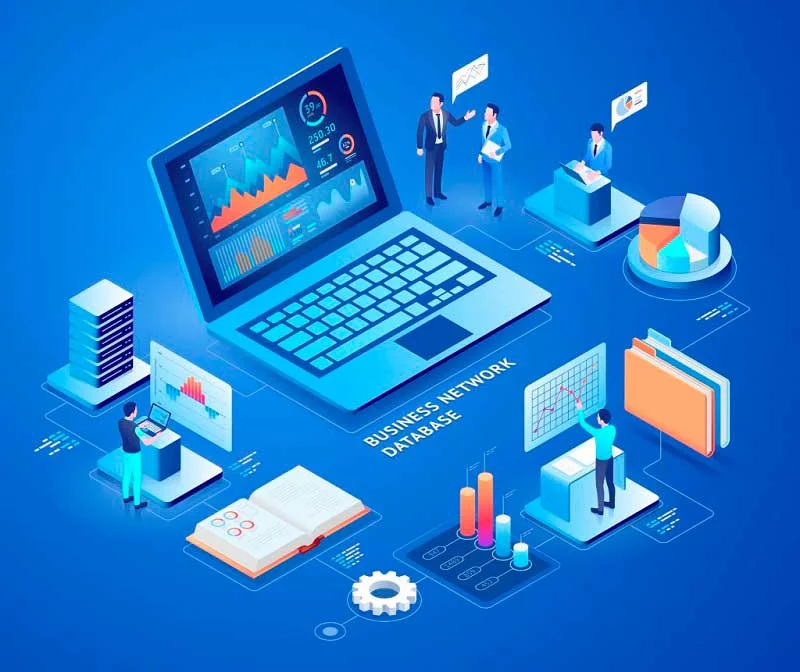Lean is part of the Agile methodology; it works best for startups and companies that need to optimize growth prices. It prioritizes figuring out value streams and eliminating waste of restricted sources. V-model improves the Waterfall approach through constant validation and verification, which increases flexibility, reduces project dangers, and improves high quality. Operations specialists add the software to a monitoring system and arrange an incident administration system to receive instant notifications if the software loses its performance.
By masking all these areas, the system improvement life cycle ensures a holistic approach to software program improvement. With that in mind, Intellectsoft’s best specialists have created a whole information to the system development life cycle. You’ll learn about its core which means and phases, main software program engineering methodologies, and an important benefits it could provide throughout project development. Ultimately, any development staff in both the IT and other industries can benefit from implementing system development life cycles into their initiatives.
It might require more effort than the initial improvement, relying on whether or not you have properly adopted the earlier phases or your system is advanced. Changes in consumer base and needs also decide how long you’re required to maintain the system. In the later section of our guide, we will inform you what would happen should you skip even a single step. Project managers and groups stages of system development life cycle should also be conscious of the challenges they might face in the course of the SDLC. Unexpected circumstances and incorrect assumptions early on can complicate development and even snowball into greater problems later. For example, if newly put in hardware doesn’t work appropriately, it’d require redevelopment, which not only delays the final supply, but in addition will increase system value.
- It can additionally be used to develop hardware or a combination of both software program and hardware at the identical time.
- It involves a set of methodologies, instruments, and processes that ensure efficient growth, deployment, and maintenance of applications.
- Developers must now transfer into maintenance mode and begin practicing any activities required to handle issues reported by end-users.
Such a team will possess sufficient expertise and information to launch a first-class software program product that perfectly corresponds to all your expectations, wants, and objectives. The new seven phases of SDLC include planning, analysis, design, growth, testing, implementation, and maintenance. New versions of a software program project are produced at the end of each section to catch potential errors and allow developers to continuously enhance the tip product by the time it’s prepared for market. This is the place Static Application Security Testing or SAST instruments come into play. Product program code is constructed per the design document specifications. In concept, all the prior planning and outlining ought to make the actual development section comparatively simple.
Design Patterns
Understanding SDLC’s scope and objectives is essential for successful implementation. It offers a roadmap for creating high-quality software program effectively. By following SDLC stages, groups can reduce dangers, optimize sources, and deliver products that actually meet user needs. At its core, the planning process helps establish how a specific problem can be solved with a sure software program answer.
In fact, in many circumstances, SDLC is considered a phased project model that defines the organizational, personnel, policy, and budgeting constraints of a large scale methods project. The typical levels of the system development life cycle are planning and feasibility, necessities analysis, design and prototyping, software growth, system testing, implementation, and upkeep. The system development life cycle or SDLC is a project management mannequin used to stipulate, design, develop, check, and deploy an info system or software product. In different words, it defines the necessary steps needed to take a project from the concept or concept stage to the precise deployment and additional upkeep. SDLC methodologies fit inside a flexibility spectrum ranging from agile to iterative to sequential. This stage includes identifying the system’s goals, defining the scope, setting timelines, and allocating needed assets.

The Spiral model can be utilized for advanced, regulated projects with incomplete requirements, the place a number of spiral turns could additionally be needed. However, its benefits may be limited in regulated tasks and beneath strict management measures the place the use of cloud resources is prohibited. The staff completes an initial system launch or necessary main updates utilizing a mix of automated and manual deployment. Minor software program fixes can be routinely carried out a quantity of times a day. They additionally need to offer developers with instructions on UX implementation that let the complete staff focus on user-centric, intuitive flows. The largest task for system architects is designing versatile system architecture that allows efficient scaling in response to rising consumer needs whereas evading overengineering.

Multiple reworks, iterations, and refinements occur earlier than the code lastly strikes to the subsequent phase. The first part is the evaluation of the present, or present Software Сonfiguration Management, system. This is where shortcomings are officially decided by a system analyst.
Possible Limitations Of Sdlc Methodologies
The system specification represents the technical necessities that will present total guidance for system design. Both are integral to profitable system growth, with the latter playing a crucial function in translating high-level necessities into actionable design components. Maintenance is an ongoing phase where the system is monitored, maintained, and up to date as needed. This contains bug fixes, efficiency enhancements, security patches, and responding to consumer suggestions.

Testing
The improvement stage is the part the place developers actually write code and construct the application based on the earlier design paperwork and outlined specs. Perhaps most significantly, the starting stage units the project schedule, which can be of key significance if improvement is for a business product that should be despatched to market by a sure time. Design documents typically embody functional hierarchy diagrams, display screen layouts, business guidelines, course of diagrams, pseudo-code, and a complete data mannequin with a knowledge dictionary. These elements describe the system in sufficient detail that builders and engineers can develop and deliver the system with minimal extra input.
This will stop them from overdrawing funding or resources when working at the identical place as other development groups. A system growth life cycle or SDLC is essentially a project management model. It defines different levels that are necessary to bring a project from its initial idea or conception all the way to deployment and later maintenance. This stage contains the event of detailed designs that brings preliminary design work right into a completed type of specifications. This work consists of the specification of interfaces between the system and its meant setting, and a comprehensive analysis of the methods logistical, maintenance and support requirements. The detail design and improvement is liable for producing the product, process and materials specifications and may lead to substantial adjustments to the event specification.
The latter will result in wasted resources throughout initial development and upkeep. The team receives business necessities for the longer term system or carves them out in a collection of interviews. It determines particular technical requirements and a function list, breaking down primary https://www.globalcloudteam.com/ features into smaller ones.
Empower your individuals to go above and past with a versatile platform designed to match the wants of your team — and adapt as those wants change. Mostly used for creating and delivering a variety of ideas, this model completely matches the clients who don’t have a transparent thought or imaginative and prescient of what their final product should seem like. It permits common incorporation of feedback, which significantly reduces the time and prices required to implement changes. While a Waterfall model permits for a high degree of structure and clarity, it might be considerably rigid. This is particularly necessary for big techniques, which often are harder to test in the debugging stage. Get a FREE Security Assessment with the world’s first True CNAPP, offering complete visibility from code to cloud.
The DDS might be a pivotal part of the manufacturing course of (Stage 4), as developers will lean on it as their major resource to build their code. Developers must also refer back to the SRS doc (from Stage 2) to ensure the product’s design safeguards the group from the anticipated points and risks famous earlier. SDLC is a course of followed for software building within a software organization. SDLC consists of a precise plan that describes the method to develop, keep, substitute, and enhance particular software. The life cycle defines a way for enhancing the quality of software and the all-around development process. The V mannequin emphasizes strict testing and verification at every development stage to ensure the quality of the software program.
